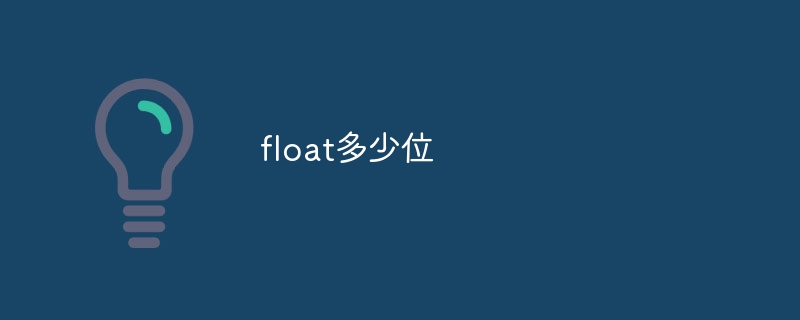
The number of digits of float in common programming languages: 1. The float type in C language usually occupies 4 bytes (32 bits) and can represent about 6 to 7 significant digits; 2. The float type in C language The float type also usually occupies 4 bytes (32 bits), and has the same range and precision as in the C language; 3. The float type in the Java language also occupies 4 bytes (32 bits), and has the same range and precision as the C language. The float type in is the same; 4. The float type in Python language occupies 8 bytes (64 bits) and so on.

Operating system for this tutorial: Windows 10 system, Dell G3 computer.
float is a data type used to store floating point (that is, decimal) values. In different programming languages, the number of digits of a float may vary. The following will introduce the number of digits of float in some common programming languages.
1. The float type in C language usually occupies 4 bytes (32 bits) and can represent approximately 6 to 7 significant digits. It ranges approximately from 1.2E-38 to 3.4E-38.
2. The float type in C language also usually occupies 4 bytes (32 bits), with the same range and precision as in C language.
3. The float type in Java language also occupies 4 bytes (32 bits), and the range and precision are the same as the float type in C language.
4. The float type in the Python language occupies 8 bytes (64 bits) and can represent approximately 15 to 16 significant digits. It ranges approximately from 2.3E-308 to 1.7E 308.
It should be noted that the above are just the number of digits and range of float type in some common programming languages. In fact, different programming languages and compilers may be different. In addition, there are some special floating point types, such as double (double precision floating point number), which usually takes up 8 bytes (64 bits) and has higher precision and range.
When using the float type, you need to pay attention to the precision of floating point numbers. Because the representation of floating point numbers is approximate, some precision errors may exist. Therefore, when comparing floating point numbers, you should use an appropriate error margin (such as using the epsilon value) to determine whether two floating point numbers are equal.
To summarize, the number of digits and precision of float depends on the programming language and compiler used. When performing floating-point calculations, you should pay attention to the issue of precision errors and choose an appropriate data type to store and process floating-point numbers.
The above is the detailed content of How many digits does float have?. For more information, please follow other related articles on the PHP Chinese website!




